Sarkhej Roza
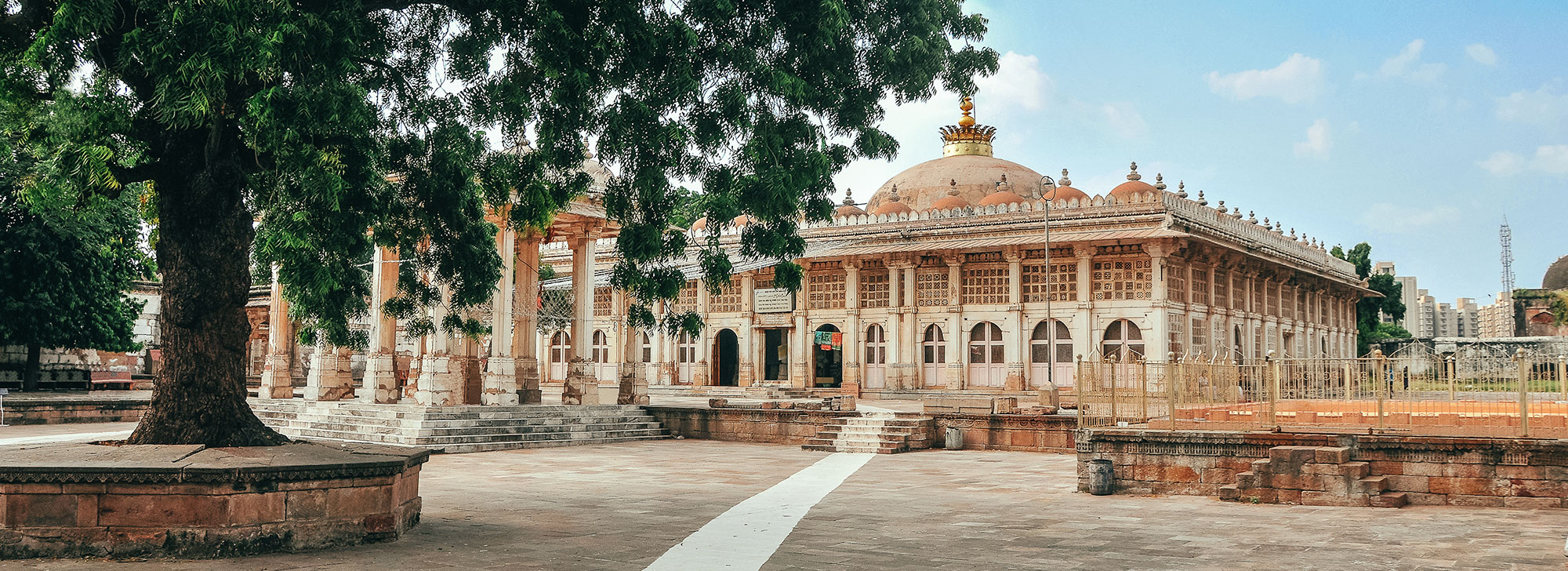
Sarkhej Roza is a stunning representation of Indo-Islamic architecture and is often referred to as the 'Acropolis of Ahmedabad' due to its grand design and historical significance. Located about 7 kilometers from the heart of the city, this mosque and tomb complex offers a tranquil retreat from the hustle and bustle of modern life. The complex is renowned for its intricate stone carvings, which reflect a unique blend of Hindu, Jain, and Islamic architectural styles. This fusion is evident in the elegant arches, detailed jali work (lattice screens), and the ornate domes that characterize the site. The design seamlessly integrates elements from different cultural influences, creating a harmonious and visually captivating experience. Sarkhej Roza consists of several structures, including the tomb of Sultan Ahmed Shah, who founded the city of Ahmedabad, as well as the mosque and various other mausoleums. The expansive courtyards and tranquil gardens add to the serene ambiance, making it an ideal destination for those interested in history and architecture. The peaceful atmosphere, coupled with the historical richness of the site, provides a reflective space for visitors to explore the intricate layers of Ahmedabad’s past.
Sabarmati Asharam
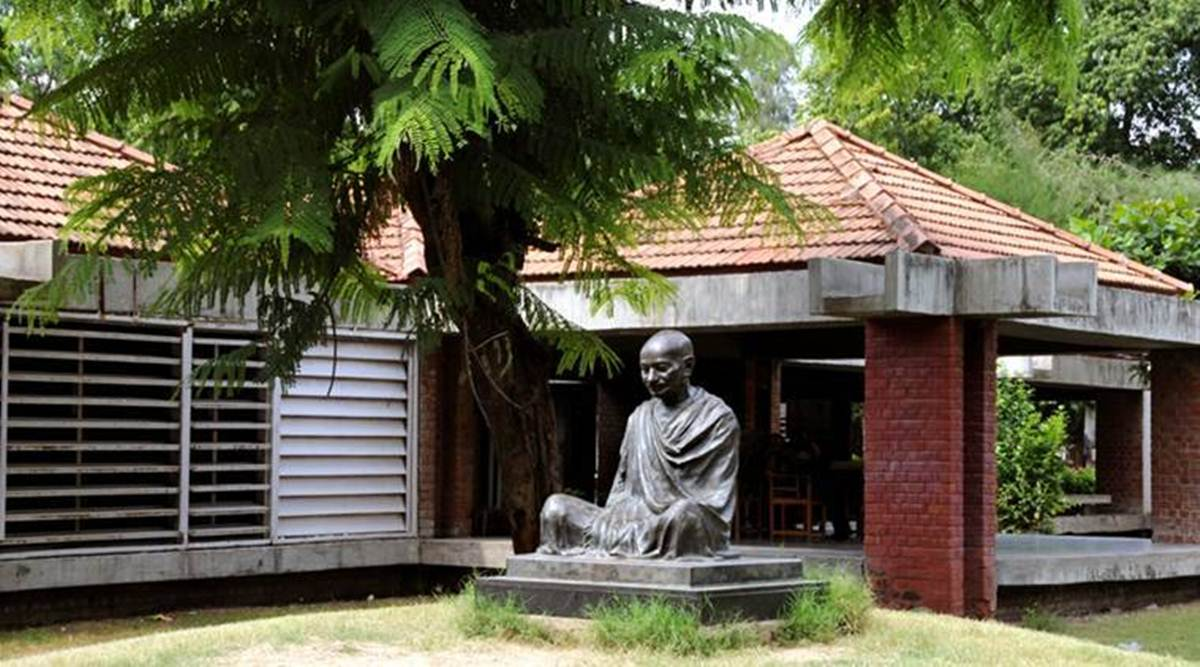
The Sabarmati Ashram, also known as Gandhi Ashram, is one of the most significant historical sites in Ahmedabad and holds immense importance in the history of India's struggle for independence. Situated on the western banks of the Sabarmati River, this ashram was established by Mahatma Gandhi in 1917 and served as his residence and headquarters for many years. The ashram is a testament to Gandhi's philosophy of simplicity, self-sufficiency, and non-violence. It was here that Gandhi developed and refined many of his principles and strategies for the Indian independence movement. The ashram is also closely associated with the famous Salt March of 1930, which was a pivotal event in the Indian freedom struggle. Visitors to the Sabarmati Ashram can explore various exhibits and displays that provide insights into Gandhi's life and work. The ashram features a museum that showcases personal artifacts of Gandhi, including his spinning wheel, letters, and photographs. The serene surroundings, including the beautifully maintained gardens and the simple but elegant architecture, offer a peaceful environment for reflection. The ashram also includes several buildings of historical significance, such as the Hriday Kunj, Gandhi’s personal residence, and the Gandhi Smarak Sangrahalaya, which houses an extensive collection of memorabilia related to Gandhi’s life and the Indian independence movement. Overall, the Sabarmati Ashram is not just a historical monument but also a place of inspiration, reflecting the ideals and vision of one of the most influential figures in modern history. It serves as a poignant reminder of Gandhi's enduring legacy and his contributions to India’s journey toward freedom.
Kankaria Lake
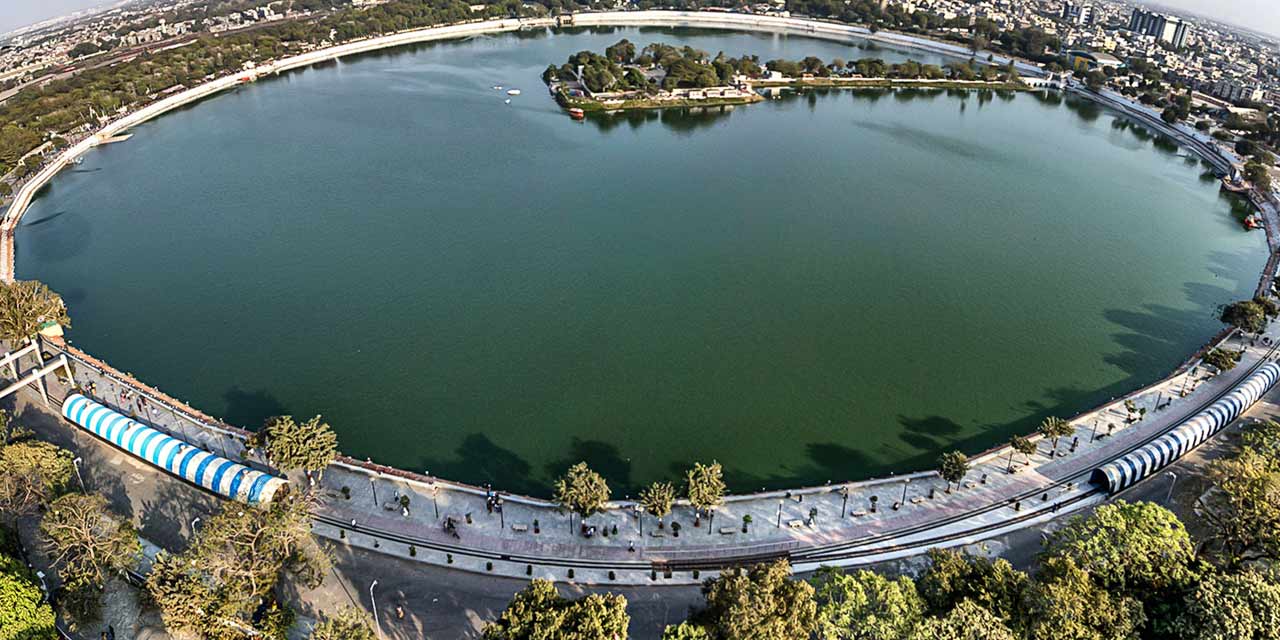
Kankaria Lake, located in southern Ahmedabad, is a historic and vibrant recreational destination. Built in 1451 by Sultan Qutbuddin Ahmed Shah II, the lake covers about 34 hectares and has been a key spot for both relaxation and community activities. The area features a scenic promenade, a toy train, and a water park, offering fun for all ages. Key attractions include the **Kankaria Zoo**, which showcases a variety of animals, and **Aero City**, an amusement park with thrilling rides. The **Sardar Patel Planetarium** adds an educational touch with its astronomy exhibits. The lake's lush gardens, walking paths, and historical monuments create a serene environment for leisurely strolls and cultural events. Overall, Kankaria Lake combines historical significance with modern amenities, making it a must-visit spot in Ahmedabad for relaxation and recreation.
Sidi Saiyyed Mosque
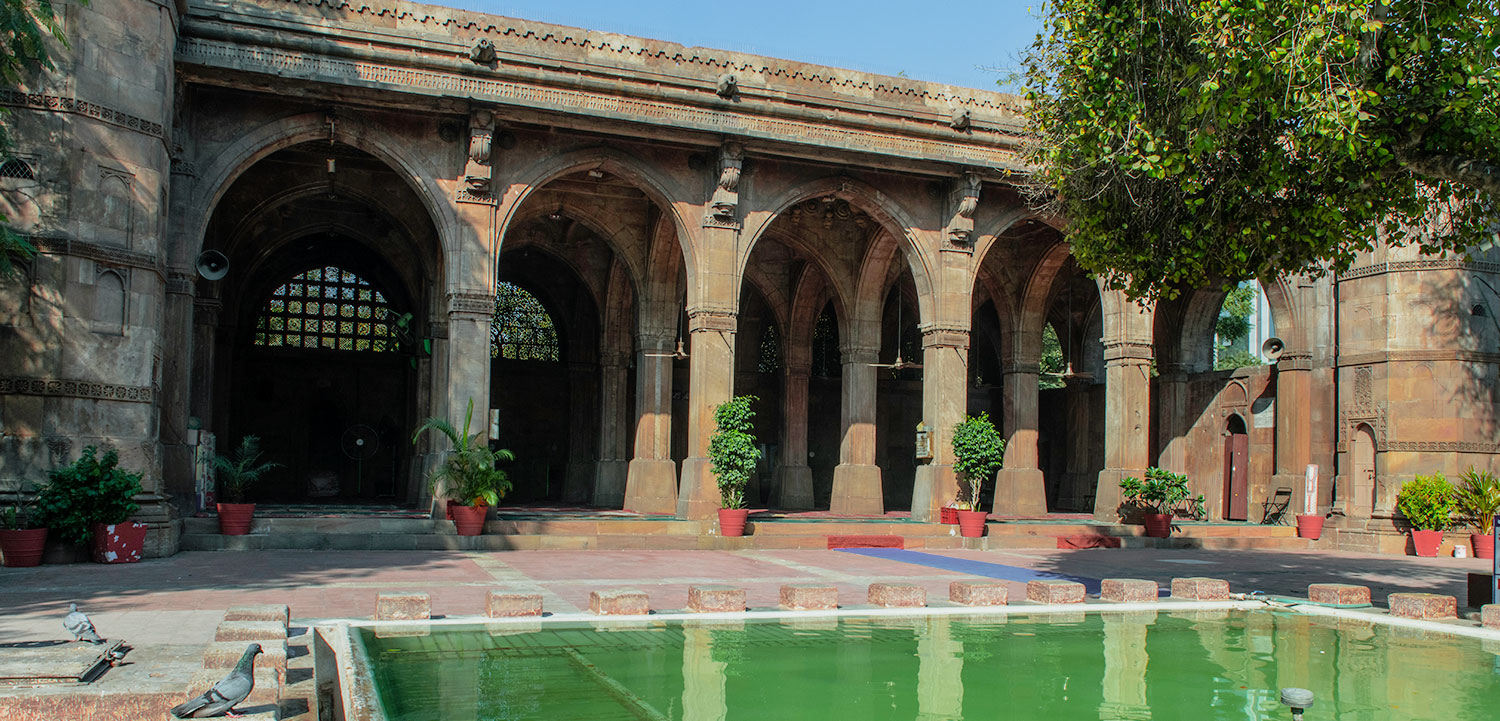
The Sidi Saiyyed Mosque, built in 1573, stands as one of Ahmedabad's most exquisite examples of Indo-Islamic architecture. This historic mosque is renowned for its intricately designed jali (lattice) screens, which are celebrated for their complex floral and geometric patterns. These screens, crafted from stone, not only enhance the mosque’s aesthetic appeal but also filter natural light in a way that creates a delicate interplay of light and shadow within the prayer hall. The mosque was commissioned by Sidi Saiyyed, a general in the army of Sultan Ahmed Shah I, and represents the last grand architectural achievement of the Sultanate period in Gujarat. Its design seamlessly integrates Hindu and Islamic architectural elements, showcasing the rich cultural synthesis of the era. The mosque features a spacious prayer hall with large, gracefully curved arches and a tranquil courtyard, enhancing its serene atmosphere. The Sidi Saiyyed Mosque is not only a place of worship but also a testament to the artistic and architectural innovation of its time. Its stunning latticework has become a symbol of Ahmedabad’s architectural heritage, attracting visitors from around the world who come to admire its beauty and historical significance.
Adalaj Stepwell
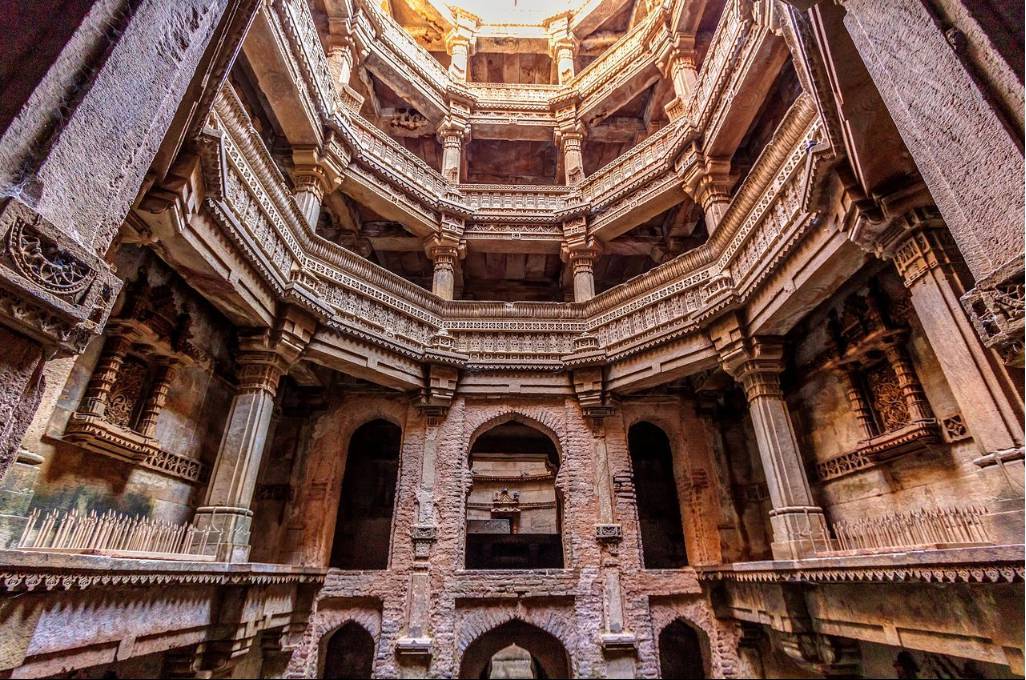
The Adalaj Stepwell, built in 1499 by Queen Rudabai, is an extraordinary example of medieval Indian architecture located near Ahmedabad. This five-story, intricately designed stepwell was constructed as a vital water reservoir and a place of respite for travelers in the arid region. It is celebrated for its stunning blend of Hindu, Jain, and Islamic architectural styles, featuring elaborate carvings, ornate pillars, and beautifully decorated balconies. The stepwell’s design includes a series of descending galleries with intricately carved stonework that creates a mesmerizing interplay of light and shadow. Each level showcases detailed floral patterns, geometric designs, and intricate lattice work, reflecting the artistic prowess of the period. The cool, serene environment inside the stepwell provides a refreshing contrast to the harsh exterior climate, demonstrating both functionality and aesthetic beauty. The Adalaj Stepwell is not only a significant engineering achievement but also a symbol of the region’s cultural and artistic heritage. Its historical importance, combined with its architectural splendor, makes it a key attraction for visitors, historians, and photographers. The stepwell stands as a testament to the sophisticated craftsmanship of medieval Gujarat and offers a fascinating glimpse into the ingenuity and artistic vision of its creators.
Jama Masjid
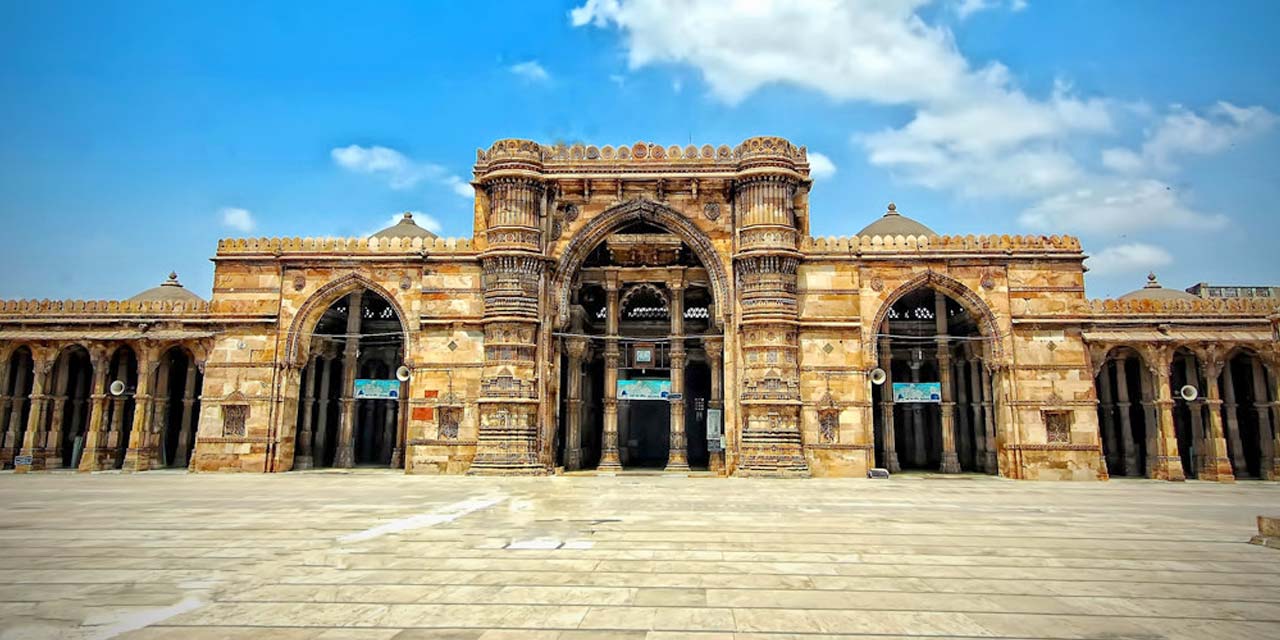
The Jama Masjid in Ahmedabad, completed in 1424 by Sultan Ahmed Shah, is a magnificent example of early Islamic architecture and one of the city's most historic landmarks. The mosque is renowned for its grand prayer hall, supported by 260 intricately carved columns and adorned with elegant arches and detailed stonework. Its design seamlessly blends Indo-Islamic architectural styles, featuring towering minarets, beautifully decorated frescoes, and serene courtyards. The mosque's vast central courtyard is an impressive space that reflects the grandeur of medieval Gujarat’s architectural ambition. The intricacy of its carvings, combined with the mosque's monumental scale, underscores its historical and cultural significance. The Jama Masjid not only exemplifies the artistic sophistication of the period but also highlights the prosperity and religious life of the Sultanate era, offering visitors a profound experience of Ahmedabad's rich heritage.
Science City
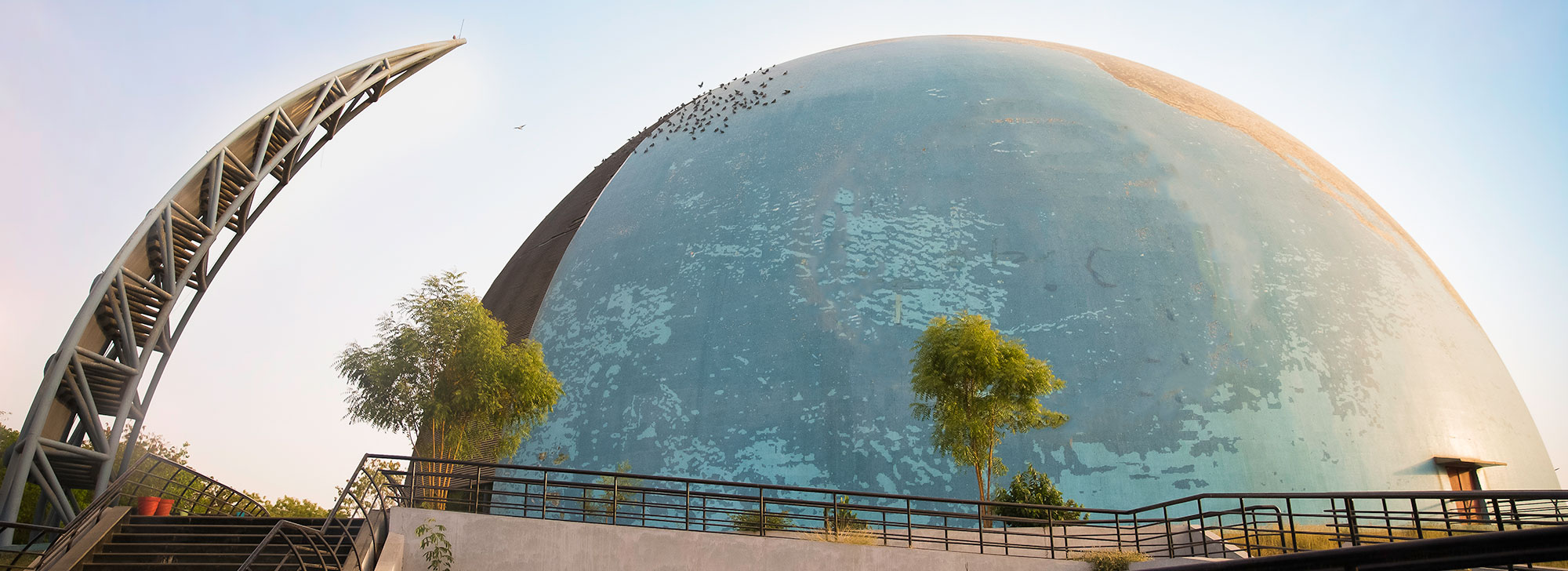
Science City Ahmedabad is an expansive, interactive science and technology center designed to captivate and educate visitors of all ages. Spanning a vast area, it features a wide array of hands-on exhibits that cover topics from physics and biology to environmental science. Key attractions include a state-of-the-art planetarium offering immersive astronomical shows, an IMAX theater for educational films, and themed areas like the Energy Park and Water Park, where scientific principles come to life through engaging activities. The center also hosts outdoor Science Park installations that illustrate scientific concepts in a practical, interactive manner. With its diverse range of exhibits, educational programs, and workshops, Science City aims to make science both accessible and enjoyable, making it a popular destination for families, school groups, and anyone interested in exploring the wonders of science and technology.